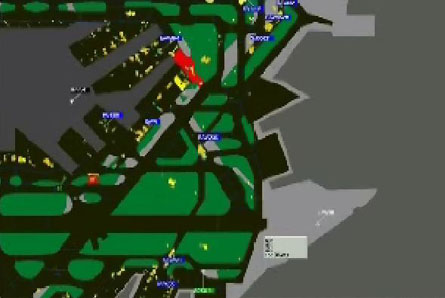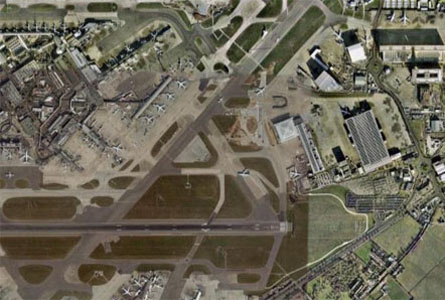Audio and video air traffic recordings have emerged of the moment last year when a British Airways Boeing 777-200 crashed short of runway 27L at London Heathrow last year.
The recording - which has been verified as authentic by Flight International - depicts the Heathrow runway incursion monitoring and conflict alert system (RIMCAS), and shows flight BA038 approaching the runway, and being cleared to land, before its identifying signal abruptly stops.
Accompanying audio shows that the BA038 crew acknowledged the landing clearance, and that air traffic controllers then instructed a taxiing flight, BA229, to wait for the 777 to pass before crossing the runway.
But the routine transmissions end, replaced by an orderly emergency response, as the inbound BA crew declares "mayday, mayday" and a tower controller tells BA229 to hold its position.
"Aircraft accident, aircraft accident," the controller states. "The position is the threshold runway 27L, aircraft type is a triple-seven." The RIMCAS display shows the 777's final position marker, in white, to the lower right.
 |
|---|
 |
|---|
© Google Earth |
The recording captures the inadvertent conveyance of the crew's evacuation instruction over the air traffic frequency, although this is answered by an assurance that firefighters are en route.
As fire crews approach the scene, an inbound Qatar Airways aircraft, flight QR011, is ordered to execute a go-around and controllers begin assigning landing aircraft to Heathrow's other parallel runway.
The RIMCAS display shows the tracks of vehicles converging on the crash site, while an emergency unit confirms that "chutes have been deployed" on the 777.
"We have an aircraft crash on the threshold of 27L," the recording continues, as the decision is taken to close 27L. "We need to switch everything to 27R and then stop things coming in for the time being."
BA038 had been arriving from Beijing on 17 January 2008. All 152 occupants survived the accident, the cause of which is suspected to have been simultaneous ice congestion in the twin-jet's engine fuel lines.
Source: Flight International























